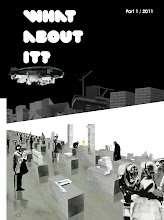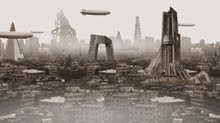
What About the Burning Icon?
By Nathalie Frankowski and Cruz Garcia
Rem Koolhaas is not Howard Roark. Nevertheless last year on February the 9th it appeared that for once reality could have been inspired by a book, when Koolhaas gave the illusion of becoming the protagonist of Ayn Rand’s novel The Fountainhead (1943). During the Lantern Festival that marks the end of the Chinese New Year’s celebrations, the TVCC tower was set ablaze. While for hours a thick smoke curtain floated above the uncontainable flames, those eager to fantasize about architecture started wondering about this peculiar image. Imagine: the destruction of the hotel and convention center on behalf of his author would be perversely audacious; a perfect climax for an already known plot.
Rand’s novel highlighted the erosive friction that exists between the architect and the politics of architectural quality. The story exposes the struggle of the modern architect—willing to exhaust all his energy in his quest for quality—in front of the mediocre world of the profession—willing to do everything to make his mission impossible. This dialectical relationship of the architect and the profession reached its apotheosis when Howard Roark—the irreverently modern architect—upset with the impasse of the profession, decided to blow up his own project.
Roark took the fate of his design in his own hands. He determined that his building should be destroyed when he recognized that the politics that surrounded the quality management of the project appeared to becoming a vortex that swallowed into sheer awfulness everything which was within reach—and that his building was not going to be an exception. When he grew upset with his Cortlandt Homes scheme because of the alterations to his original design, he didn’t hesitate before he decided to destroy it or felt unabashed after. The implosion of the welfare project he designed came as a critique to an architectural culture driven by incompetence and mediocrity. For Roark there were no doubts about deleting a mistake, and they—the profession—according to his vision, had failed to execute the project according to his quality standards. If Howard Roark had anything, it was conviction and with the explosion of Cortlandt he made his point clear: he wouldn’t allow anybody—clients, developers, contractors, builders, critics or the public—to stand between him and his chef d’oeuvre.
Would it be absurd then, to raise a hopeful and maybe naïve “what if” and wonder what would have happened if Koolhaas assumed the role of The Fountainhead’s main character? What if like Roark, Koolhaas decided to eliminate his own building just for the sake of delivering a powerful message? What if the architect in charge stopped suffering from that hazardous impotence that he claims is the condition of architecture, and confronted the wave instead of just surfing on it? What if the moral incompatibility of the client’s demands was the factor that triggered the building’s fate? What if Koolhaas decided to risk it all while starting a battle against the agents of architecture’s misfortune? What if for once architecture quality only depended on the architect?
By doing so, Koolhaas could be more than just denouncing an architecture that has become incapable of adapting to a period of economic, environmental, and ideological struggle. By destroying his own work he could have become an impersonation of the Nietzschean madman, an architectural Zarathustra, a rebellious prophet. His herculean effort would have faded the image of the martyrdom of the impotent architect under the unbearable power of mean institutions, despotic politics, unscrupulous clients and envious public. Being Howard Roark could have challenged the cynical attitude that architects frequently use to justify projects of questionable ethics like Mies’ proposals for a Nazi National Pavillion in 1933 (for the 1935 Brussels World Fair), or the museum of tolerance in Jerusalem that Frank Gehry projected over an ancient Muslim cemetery, or the Faustian flirt that makes architects feel aroused by the impertinence of scraping the most uncomfortable corners of memory like on the Haus Der Kunst renovation in Berlin.
Koolhaas igniting the TVCC tower could have been the apotheosis of a year of extreme highs and lows. Blowing up the building on the New Year’s celebrations would have marked a breaking point between a time of genialities and monumental inaugurations and a new period that would see few openings and that would face a climate of anguish and disconcerting fate. Koolhaas destroying the work for his biggest and wealthiest sponsor would have made people point fingers in all directions, plotting theoretical schemes for such a catastrophic meltdown. All the questions regarding the authorship of this apocalyptic incident would have evaporated after Koolhaas had taken responsibility for his actions. “I burned the building”, he would have announced.
By condemning himself, not only would he commit all the other stars of the architectural constellation to assume responsibility for what they have created, but architects would start handling more than just the artistic credit of their project, as they would take the ethical one too. Junkspace , The Generic City and the rest of Koolhaas’ intellectual repertoire would stop being read as academic essays and instead would be immediately raised to cult status, being praised and hated for their political agenda. Architecture would stop being used as a vehicle of political propaganda and instead would assume its own aesthetic, ethic, and political agenda.
People would create and endless list of theories that would surface regarding Koolhaas intentions for terminating his own work. Some would think that he grew upset with the project not being carried out on time for the Olympics that were held months before the fire broke out. Others might speculate about his critical position towards his client, about their clashing views on politics, quality and management. All of this would add up to create a great expectation for the jury against the architect. And when the time of the judgment came the world (or those interested) would watch in astonishment as Koolhaas’ allegations were spelled out denouncing all the reasons that led him to finish his project. Standing in front of the judge he would read his testimony: being sponsors of the massive overspending; being the builders of the modern pyramids for the contemporary pharaohs; leading an army of uncritical designers looking for fame; feeding a media that only responds to glitter and glamour; ignoring the demands of a crisis that had eroded all layers of coherent development, destroying architecture in order to save it from mediocrity.
But the fact is that Koolhaas did not burn the tower of the TVCC. The fire that illuminated the night of Beijing for hours seems to have been the result of an accident with fireworks. The zinc that sent uncontrollable flames was not a premeditated spectacle; there was no supposed hidden message behind the fire. At the end of this story, there won’t be a Cortlandt Homes trial against Koolhaas. The Dutch architect will not have denounced the ineptitude on a monumental scale of the profession in a court case against a battalion of politicians and infuriated developers. Architecture will continue to be an exercise for the powerful, and the economically privileged, while the architects will still be seduced by the flash of the cameras and the brightness of the papiercouché.
In The Fountainhead, the architect became a hero by leading the way towards an architecture of high quality by any means necessary. At the moment we have all the elements necessary to make our own novel; but, will we finally have our hero or will Howard Roark only remain a fictitious personage? ■
special thanks to Federico Pedrini



































